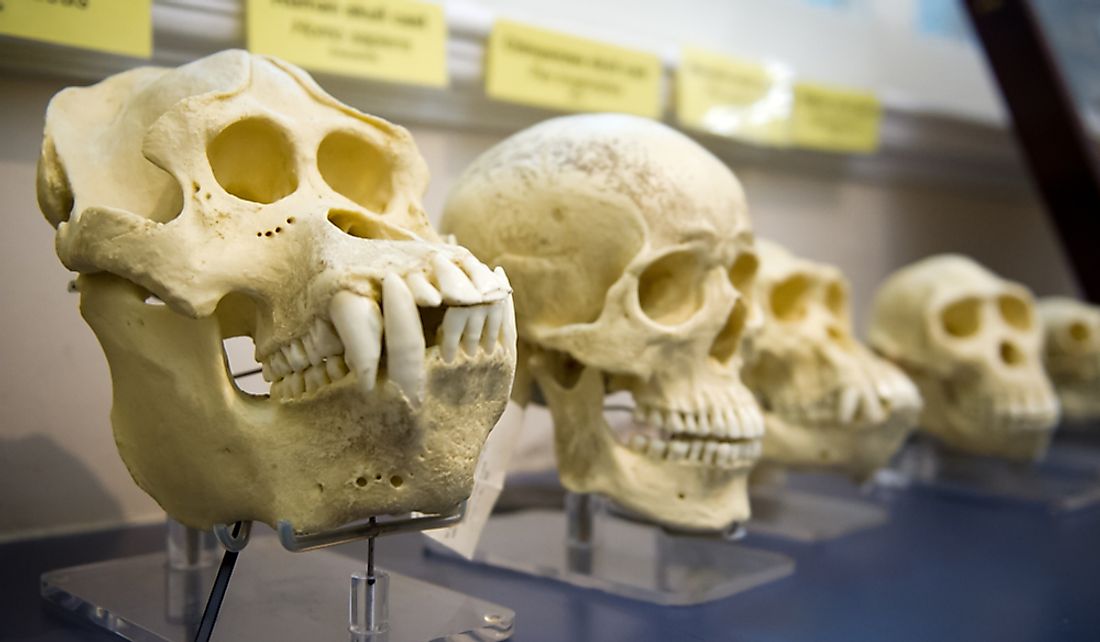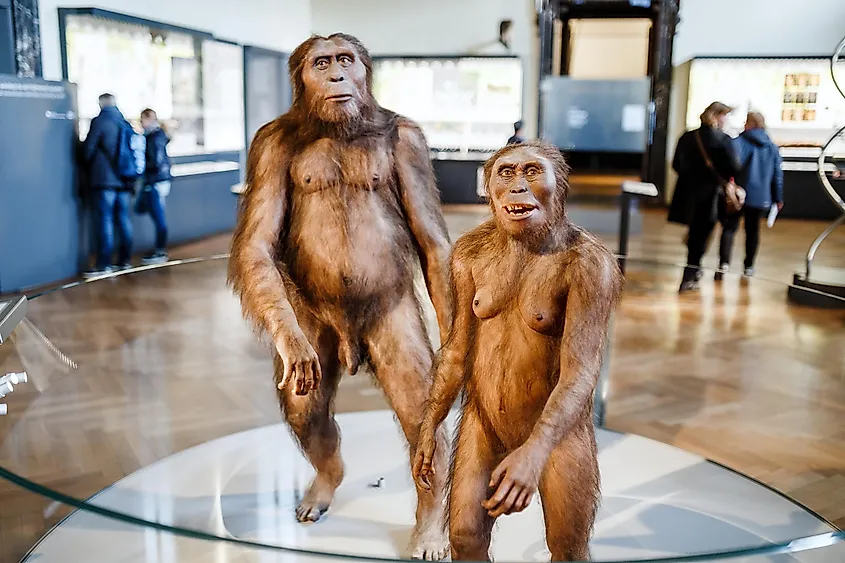How Long Have Humans Been On Earth?

Humans and their ancestors have been walking the planet for about 6 million years. Homo sapiens, who are the modern form of humans evolved 300,000 years ago from Homo erectus. Human civilizations started forming around 6,000 years ago.
First Humans

Ardipithecus is the earliest link to humanity dating 6 million years ago. The primate was based in Africa and was the first to walk upright. Bipedalism allowed Ardipithecus to use his hands for weaponry, toolmaking, and survival needs. Between 2 million and 4 million years ago, the Australopithecus group appeared. This group was more advanced than the Ardipithecus: they could walk upright, create advanced tools, and climb trees. The Paranthropus group appeared between 2 million and 3 million years ago. This group had a broader diet, larger teeth, and a more advanced brain.
The Homo Species
Between 1 and 2.5 million years ago, the Homo species appeared in Africa and began spreading throughout the world. From northeast Africa, the species moved to China, then to Australia, Europe, the Americas, and finally to Polynesia. This is what is known as the Out-of-Africa theory, which states all humans evolved from the same ancestors. As archaeologists continue to discover new evidence, the understanding of the evolution process of humans becomes complex. New evidence has led scientists to suggest that the Homo species might have developed independently within and outside Africa, since Homo erectus, a precursor to Homo sapiens, is known to have left Africa and migrated to other continents.
Homo Habilis
Homo habilis was the first of the modern humans. Homo habilis had a slightly larger skull signifying a bigger brain, smaller teeth and a smaller face than the Australopithecus. The remains of the Homo habilis were first discovered in 1960 by archaeologists Louis and Mary Leakey in Olduvai Gorge, Tanzania.
Homo Erectus

Homo erectus is the earliest human species to possess the body proportions of the modern human. The species existed between 1.2 and 1.8 million years ago and was characterized by longer legs, shorter arms, and shorter teeth compared to the Homo habilis. The first complete fossil of the Homo erectus is "Turkana Boy" discovered in Turkana, Kenya. Four species are believed to have developed from Homo erectus: Homo floresiensis, Homo heidelbergensis, Homo neanderthalensis, and Homo sapiens.
Homo Sapiens
Homo sapiens began walking the African continent around 300,000 years ago and is the only species of the Homo genus that is not extinct. Homo sapiens is the most advanced of all living species on the planet. There are over 7.8 billion people on the planet and researchers anticipate that the evolution of the Homo sapiens can only be rendered extinct by a planetary-level catastrophe.
Are There Other Species Of Humans?
Homo sapiens is the only species of humans that survived the evolution process. However, it was likely not the only species that evolved from Homo erectus. Homo neanderthalensis (Neanderthal man) lived in Europe and southwestern to central Asia but became extinct 40,000 years ago. Homo floresiensis (the Hobbit) evolved in Asia but became extinct 50,000 years ago. Homo heidelbergensis lived in Europe, China, and parts of Africa but became extinct 200,000 years ago.
Homo sapiens migrated from East Africa in waves, around 7,000 years ago the species reached the southern coast of Asia then to Oceania 50,000 years ago and finally reached Europe forty thousand years ago. About 20,000 years ago, the northern Eurasian population migrated to the Americas. Canada and Greenland were inhabited 4,000 years ago while Polynesia was inhabited 2,000 years ago.











